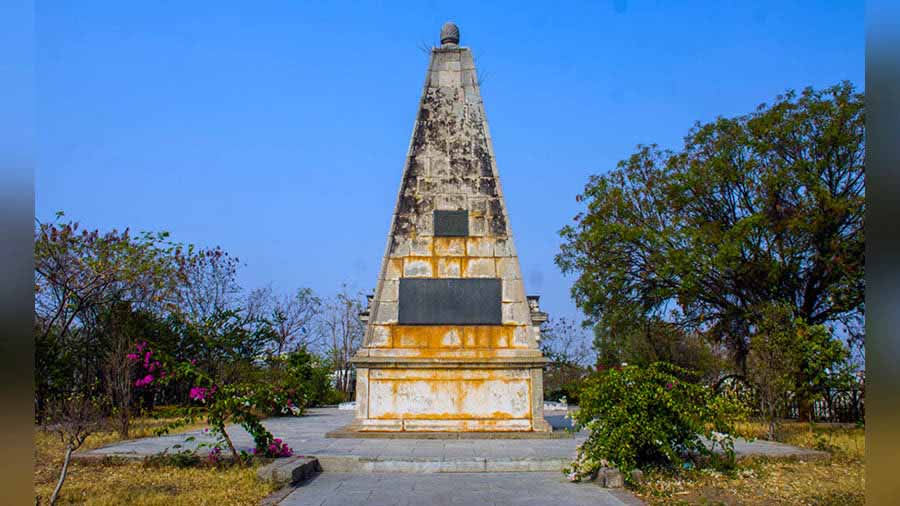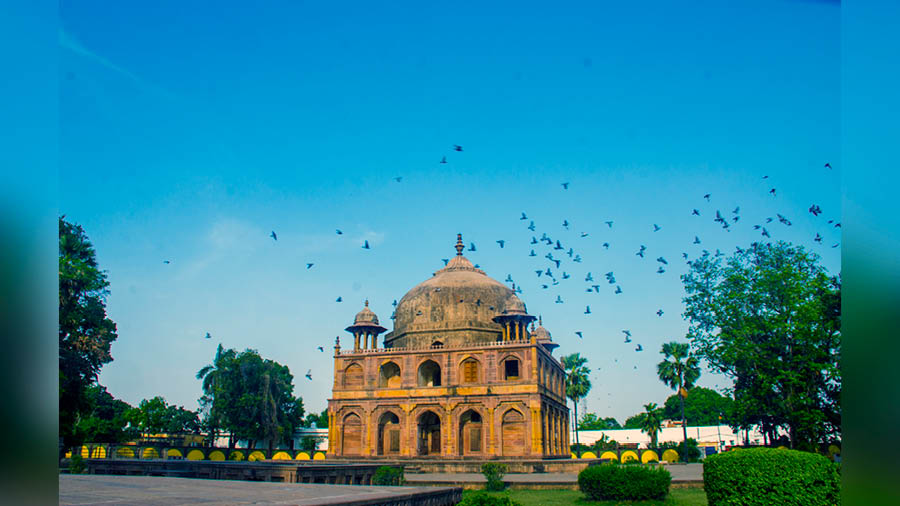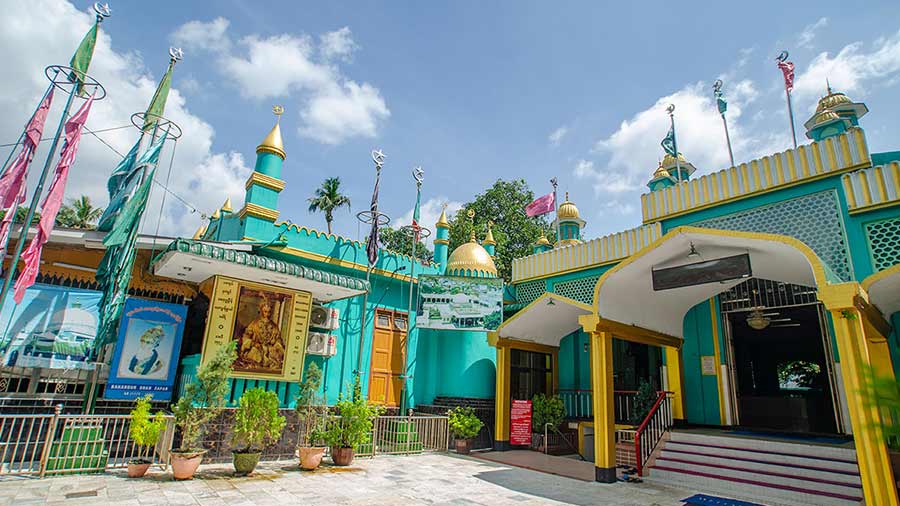A path meanders upwards past the TV tower in Malakpet, a suburb in south Hyderabad, leading to the tomb of Michel Joachim Marie Raymond (1755-98), or simply Monsieur Raymond. He arrived in India in 1775 and settled in Pondicherry. Later, he served as a mercenary under Hyder Ali of Mysore and then served the Nizams of Hyderabad. Under Nizam Asaf Jah II, he rose to the position of French resident of Hyderabad. His British counterpart was the celebrated James Achilles Kirkpatrick, the principal character of William Dalrymple’s best-selling book White Mughal.
Like Kirkpatrick, Raymond also abandoned his European lifestyle and adopted the local way of life. Dalrymple adds, “…Raymond had definitely abandoned Christianity – something that seemed to be confirmed by the absence of any Christian references or imagery on his tomb… His Hindu sepoys Sanskritised the name Monsieur Raymond to Musa Ram, while the Muslim knew him as Musa Rahim.”
The Nizam was more than confused and after Reymond’s death, the Nizam decided to pay tribute to his French resident in the most unusual and non-religious way by sending a box of cheroots and a bottle of beer. The ritual continued till the Nizams lost their power after Independence.

The pavilion and obelisk of Raymond’s Tomb
Reymond had a flamboyant lifestyle and acquired enormous wealth. Sadly, his life was short and death was mysterious. On March 25, 1798, he was found dead under highly suspicious circumstances. He was only 43 and evidence points to the use of a long-term slow poison. He was laid to rest beneath a pillared pavilion representing the Greek Palace of Winds and next to it stood an obelisk. Both the structures stood on a hilltop in Malakpet, just outside the city of Hyderabad.
Sadly, after Independence, the tomb suffered prolonged periods of neglect and during the rains of October 2001 the pavilion collapsed. It was rebuilt again in a couple of years at a cost of ₹ 5 lakhs and reopened to the public on April 14, 2003. Even after reconstruction the neglect continued but finally, in 2009, the tomb and its surrounding area was given a facelift.
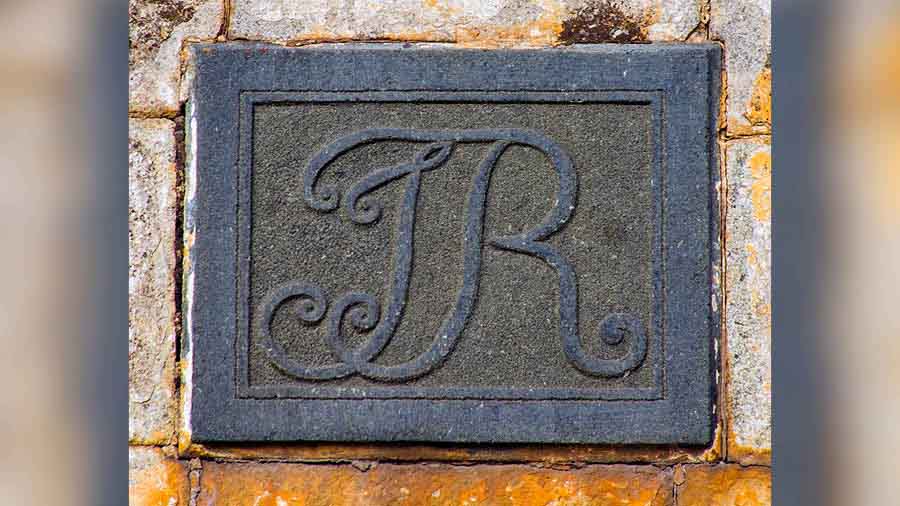
The initials 'JR' on the obelisk of Raymond’s Tomb
Today, the city of Hyderabad has expanded and the suburbs of Malakpet are now part of the city. So, the small hillock no longer has its isolation but is surrounded by an assortment of bungalow-style houses along with apartment blocks.

The pavilion housing the mortal remains of Raymond
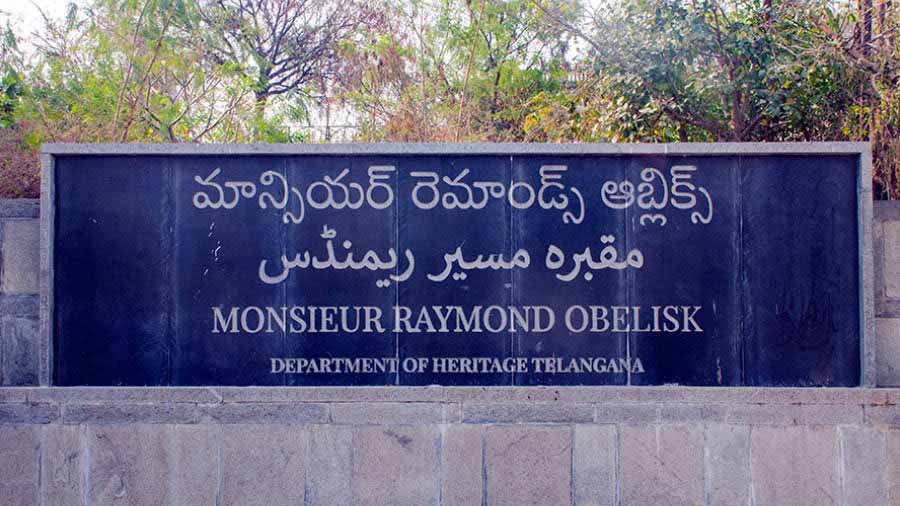
A trilingual plaque welcomes visitors to the Raymond's Tomb complex
A trilingual (Telugu, Urdu and English) plaque setup by the Department of Heritage, Telangana, welcomes visitors to the tomb complex. The complex is complete with manicured gardens and winding paved pathways. A path meanders up to the tomb of Reymond. The obelisk contains the initials JR of Joachim Raymond on all four sides. It is curved out of black stone and written in a flowing looped italicized format. The flat roofed pavilion is supported by 28 pillars and has projections on the east and west end. The projections are topped with decorative pediments.
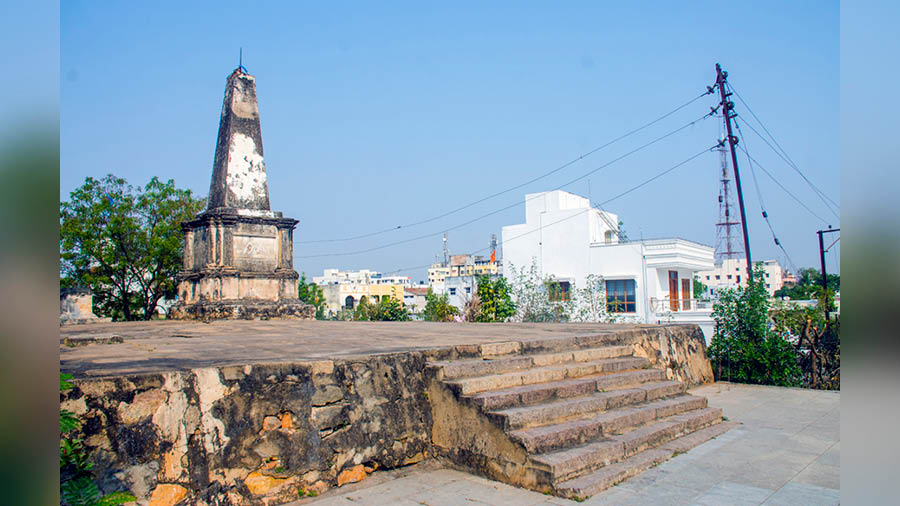
The obelisk of Ann Janet Elizabeth Jenkins
The complex also houses another tomb housing the mortal remains of Ann Janet Elizabeth Jenkins, who died 1809 during childbirth. The grave also houses the body of the infant, who died shortly after birth. The tomb is in the shape of a rectangular solid topped with a black stone with the epitaph. Next to it stands an obelisk, similar to that of Raymond’s but shorter in height.


